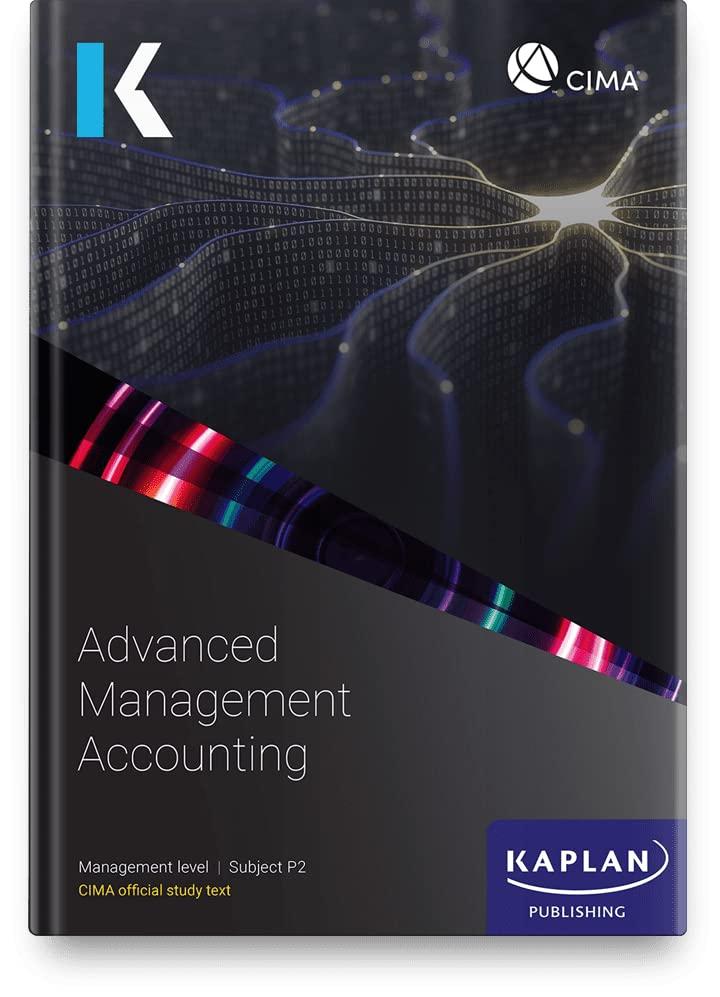November 20X7 In early November 20X7, R Ltd considered manufacturing a new product called Sparkle. Up to
Question:
November 20X7
In early November 20X7, R Ltd considered manufacturing a new product called Sparkle. Up to that time $\$ 750,000$ had been spent on researching the product. The company estimated that it would take two further years to develop Sparkle to the point of production and by that time it would probably have a lead of 18 months over its chief competitor. R Ltd expected to launch Sparkle on 1 November 20X9 and to produce and sell 100,000 units in the first year if $\$ 1.5$ million was spent on pre-launch advertising. During the first year of production, $R$ Ltd planned to spend $\$ 750,000$ on advertising; this level of expenditure would be maintained each year.
From the second year onwards, the market was expected to increase to between 160,000 and 200,000 units. Once the competitor entered the market, it was thought that the competitor would win $50 \%$ market share very quickly because of its reputation.
The development and engineering costs of Sparkle were estimated to be $\$ 6$ million, $\$ 2$ million of which would be incurred in the first year of development, $20 X 7 /$ X8. A special piece of equipment costing $\$ 500,000$ would be required for production and this was to be installed in the month prior to the commencement of manufacture.
R Ltd planned to set a selling price of $\$ 249$ a unit on the basis that variable manufacturing and distribution costs were expected to be $\$ 122$ per unit. The company normally sets selling prices so that the contribution/sales ratio is $50 \%$ or slightly more. The fixed administrative and space costs that relate to the product, and which would be incurred from the commencement of production, were estimated to be $\$ 7.5$ million per annum. It was also estimated that working capital of $\$ 2.5$ million would be needed at the start of production in November $20 \times 9$.
The product was expected to have a life span of about five years, at which time the equipment would be scrapped as having no value. The company estimated its cost of capital to be $12 \%$ per annum.
November $20 \mathrm{YO}$
Development of Sparkle took six months longer than planned. This was largely because it proved necessary to employ two extra members of staff in the engineering department for the technical aspects of the product development.
The engineering department did not have a budget for this in year 1 (20X7/X8) and so employment was delayed until the start of the second year, November 20X8, when the budget for the extra funds had been approved. This caused the planned expenditure on development for year 2 to be spread over the 18 month period from the start of year 2 to the middle of year 3 . The two new members of staff were employed at salaries of $\$ 45,000$ each and employment costs were estimated to be $100 \%$ of the first year's salary. As a result, production started six months late in May 20Y0, the pre-launch costs were delayed accordingly and only 55,000 units were sold in the year November 20X9 to October $20 \mathrm{Y0}$.
As expected, the competitor has decided to enter the market and is launching its rival product Glitter this month, November $20 \mathrm{YO}$.
$\mathrm{R}$ Ltd now predicts the market for $20 \mathrm{Y0} / \mathrm{Y} 1$ to be 150,000 units and its share of this to be $50 \%$. Thereafter the market size will be as forecast previously, i.e. between 160,000 and 200,000 units each year, and the product life cycle will stop at the same date as planned previously. The monetary value of all expenditures and revenues to date has been very close to the estimates and there is no reason to revise future forecasts in this respect.
Required:
Using the case of Sparkle in the scenario:
(a) Calculate the net present value of the project as perceived at the beginning of November 20X7, when R Ltd decided to manufacture Sparkle. State clearly any assumptions you make.
(b) Calculate the revised net present value of the whole project as perceived at the beginning of November $20 \mathrm{YO}$.
(c) Describe the position revealed by the figures you have calculated in (a) and (b) and on the events which have taken place. Identify what the company should do now?
Step by Step Answer:






